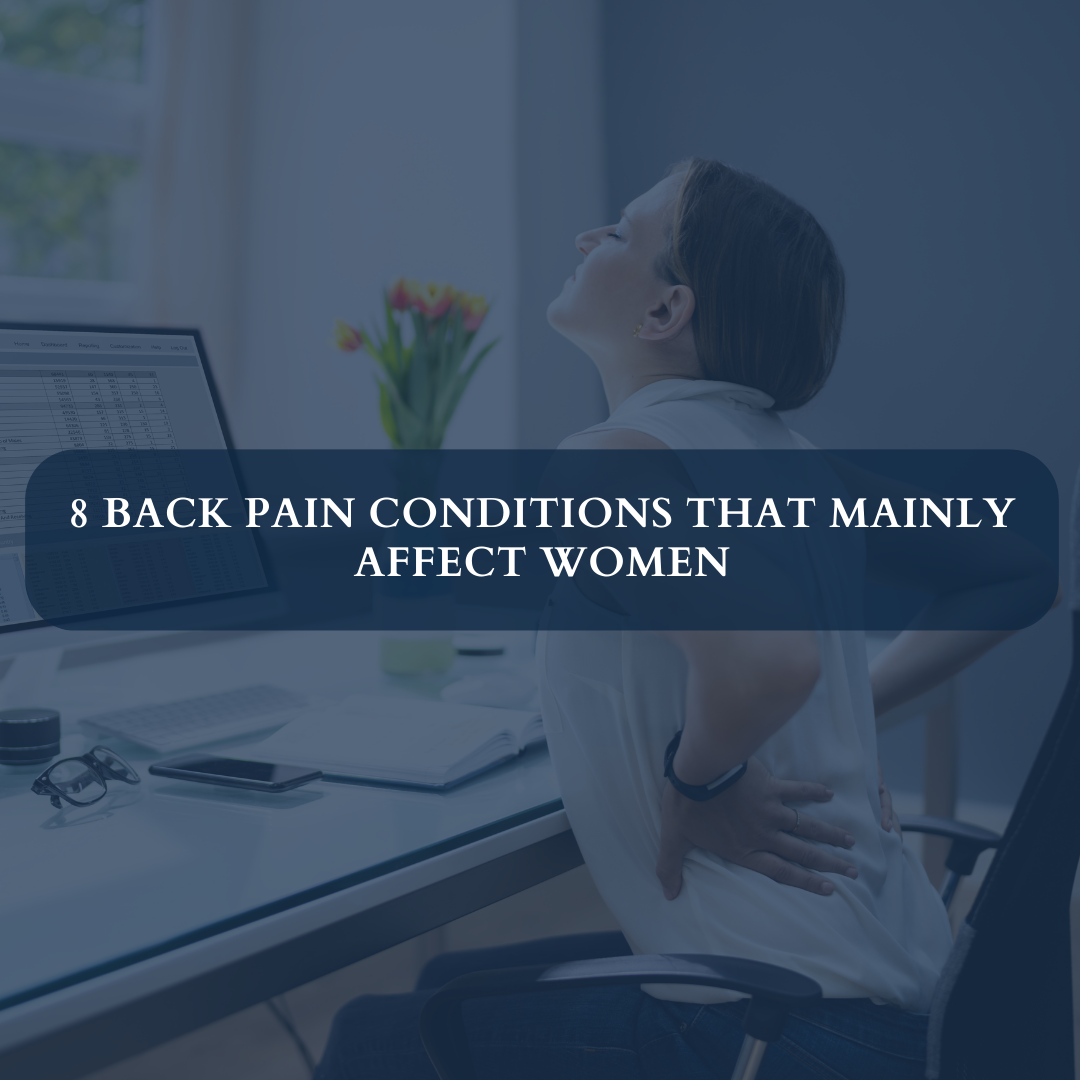Back pain is a prevalent issue that affects millions of people worldwide. While it can impact anyone, certain conditions tend to be more common in women. Understanding these conditions is crucial for proper diagnosis, treatment, and prevention. In this article, we’ll delve into eight back pain conditions that predominantly affect women.
1. Osteoporosis
Osteoporosis, a bone disease more prevalent in women, particularly post-menopause, results in weakened and brittle bones. The condition, characterized by reduced bone density, heightens the risk of fractures, especially in the spine. Minor stresses or movements can lead to vertebral compression fractures, causing significant pain and mobility issues. Symptoms include height loss, stooped posture, and chronic back pain. Prevention involves maintaining adequate calcium and vitamin D levels, regular exercise, and medications to strengthen bones and mitigate fracture risks. Understanding osteoporosis is crucial for early detection and effective management, particularly for women at higher susceptibility.
2. Fibromyalgia
Fibromyalgia is a chronic pain disorder that predominantly affects women. It is characterized by widespread musculoskeletal pain, fatigue, and tenderness in specific points of the body known as tender points. While the exact cause of fibromyalgia remains unknown, it is believed to involve abnormalities in pain processing within the central nervous system. Women with fibromyalgia often experience symptoms such as sleep disturbances, cognitive difficulties (often referred to as “fibro fog”), and mood disorders like depression and anxiety. Diagnosis can be challenging, and treatment typically involves a combination of medication, physical therapy, lifestyle changes, and stress management techniques.
3. Endometriosis
Endometriosis is a condition where tissue similar to the lining of the uterus grows outside the uterus, predominantly affecting women of reproductive age. This abnormal tissue growth can lead to inflammation, scarring, and adhesions in the pelvic region, resulting in chronic pelvic pain and lower back discomfort. Women with endometriosis often experience severe menstrual cramps, pain during intercourse, and infertility. The exact cause of endometriosis remains unclear, but hormonal and immune system factors are believed to play a role. Treatment options include pain management, hormone therapy, and surgical interventions to remove endometrial tissue and improve symptoms.
4. Pregnancy-related Back Pain
Pregnancy-related back pain is common due to physical changes such as weight gain, hormonal fluctuations, and the expanding uterus. As the pregnancy progresses, the increased weight places strain on the back muscles and ligaments, leading to discomfort and stiffness. Additionally, hormonal changes, particularly the release of relaxin, can loosen the ligaments supporting the spine, contributing to instability and pain. Posture changes, such as an exaggerated curve in the lower back, can further exacerbate the problem. While pregnancy-related back pain typically resolves after childbirth, proper posture, gentle exercises, and prenatal yoga can help alleviate discomfort during pregnancy.
5. Degenerative Disc Disease
Degenerative disc disease is a condition characterized by the breakdown of intervertebral discs in the spine. While aging is a primary risk factor, certain lifestyle factors and genetics can also contribute to its development. As these discs lose their cushioning ability, spinal stability decreases, leading to pain and reduced mobility. Women may experience worsening back pain, often in the lower back and neck, as DDD progresses. Factors such as aging, genetics, and lifestyle choices contribute to its development. Treatment options aim to alleviate symptoms and improve function, including physical therapy, medication, and in severe cases, surgery. Lifestyle modifications such as maintaining a healthy weight and avoiding smoking can also help manage DDD.
6. Osteoarthritis
Osteoarthritis, the most common form of arthritis, predominantly affects women, particularly after menopause. This degenerative joint disease results from the breakdown of protective cartilage between bones, leading to pain, stiffness, and reduced mobility in the spine, notably the lower back and neck. Women are more prone to osteoarthritis due to hormonal changes and genetic predispositions. As cartilage wears down over time, bones may rub against each other, causing inflammation and discomfort. Management typically involves pain relief, physical therapy, lifestyle modifications, and, in severe cases, surgical intervention to alleviate symptoms and improve joint function.
7. Scoliosis
Scoliosis is a spinal condition characterized by a sideways curvature of the spine, more commonly observed in females. While it can develop during adolescence, it may also manifest in adulthood. Females often experience more severe forms of scoliosis. The abnormal curvature of the spine can exert uneven pressure on the vertebrae, leading to discomfort and back pain. Treatment options depend on the severity of the curvature and may include observation, bracing, or surgery in severe cases. Early detection through screening is crucial for managing scoliosis effectively and preventing complications associated with spinal deformities.
8. Spinal Stenosis
Spinal stenosis is a condition characterized by the narrowing of the spinal canal, predominantly affecting women, particularly after the age of 50. This narrowing can lead to compression of the spinal nerves and spinal cord, resulting in symptoms such as back pain, leg pain, numbness, and weakness. Women are more susceptible to spinal stenosis due to factors like hormonal changes and genetic predispositions. Causes may include degenerative changes in the spine, herniated discs, or abnormal bone growth. Treatment options range from conservative measures like physical therapy and pain management to surgical interventions aimed at relieving pressure on the affected nerves.
In conclusion, women are susceptible to various back pain conditions due to biological, hormonal, and structural differences. Understanding these conditions and their symptoms is essential for early detection and effective management. If you experience persistent back pain or discomfort, consult with a healthcare professional for proper evaluation and treatment tailored to your specific needs.
Ready to explore your options for chiropractic and physiotherapy?
Contact SwastyaPhysio today to schedule a consultation and discover the best path to your wellness journey. We’re here to support your health every step of the way
Banaswadi | HBR layout | Kalyan Nagar | Kammanahalli | Horamavu | Hennur
